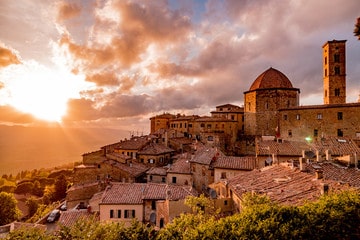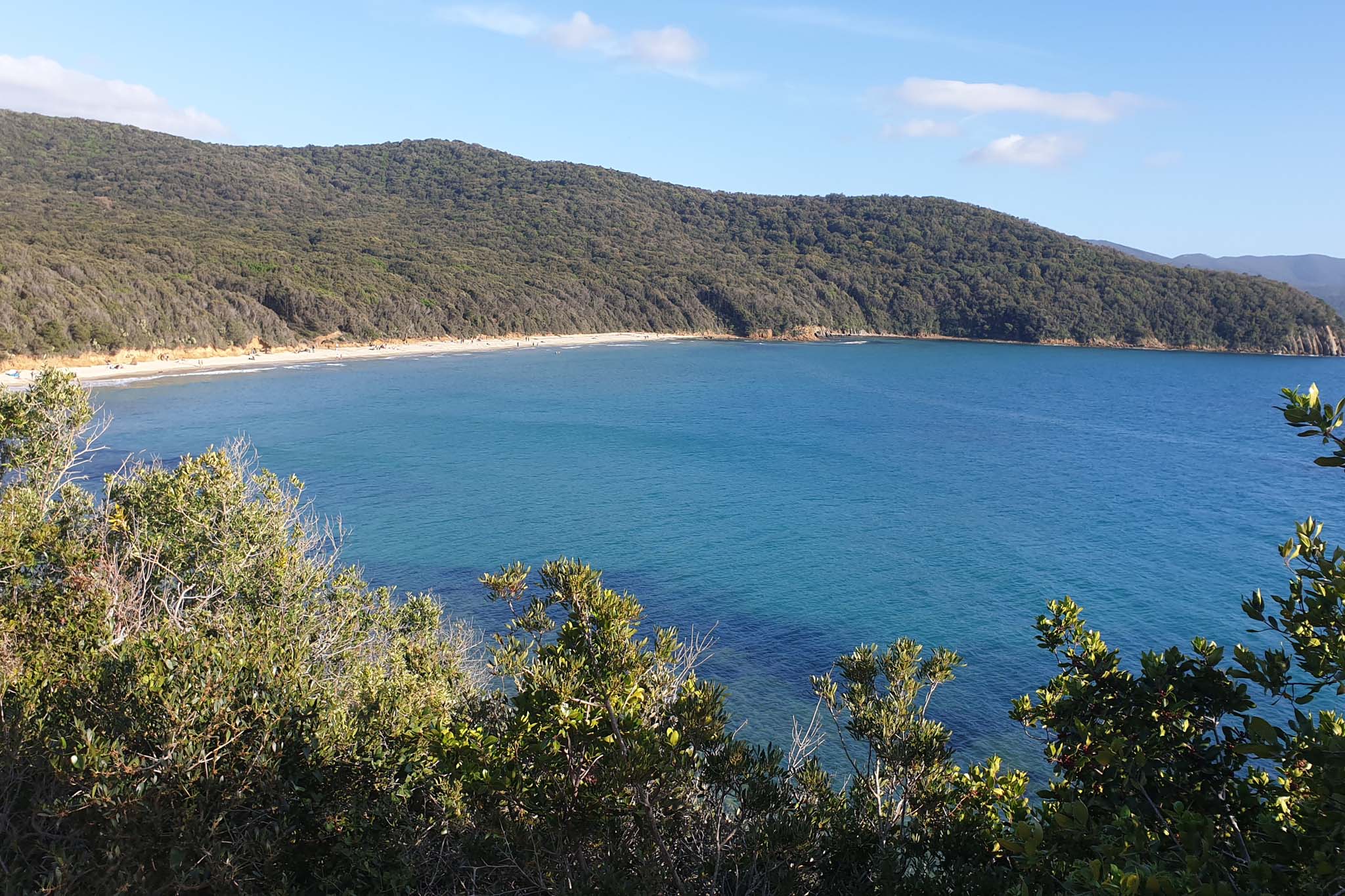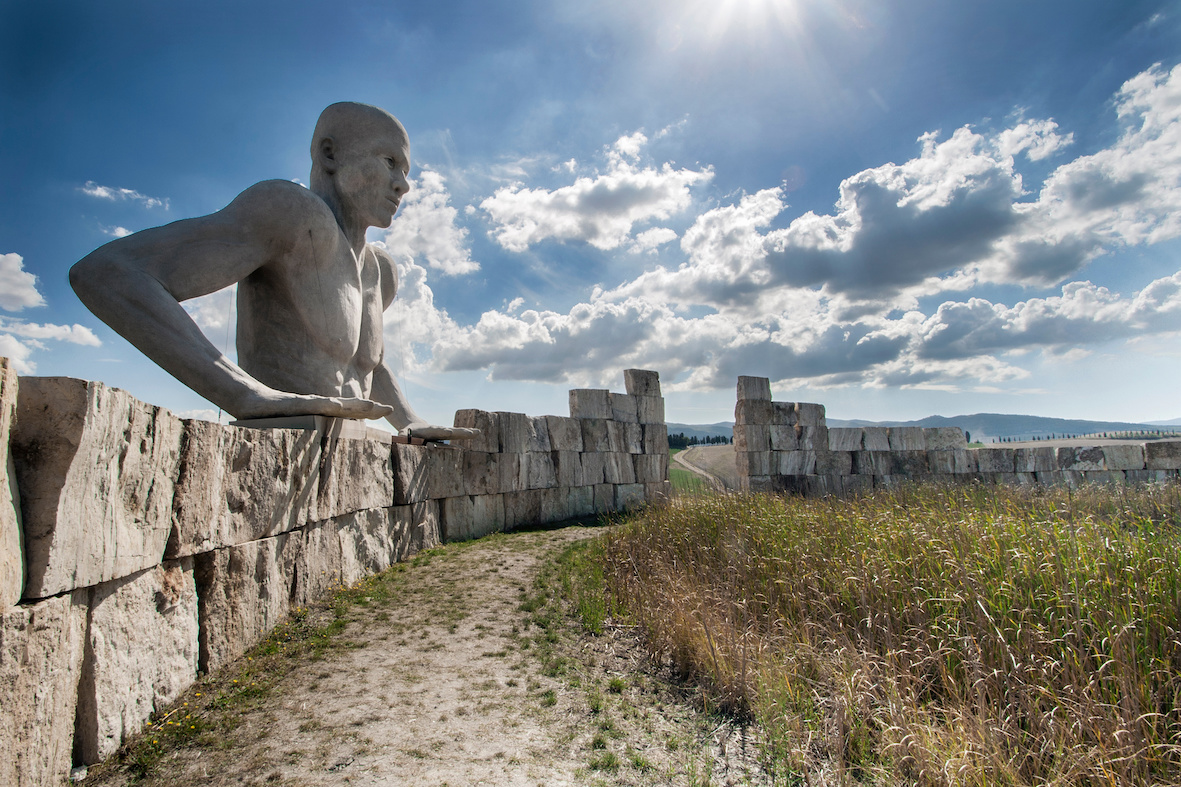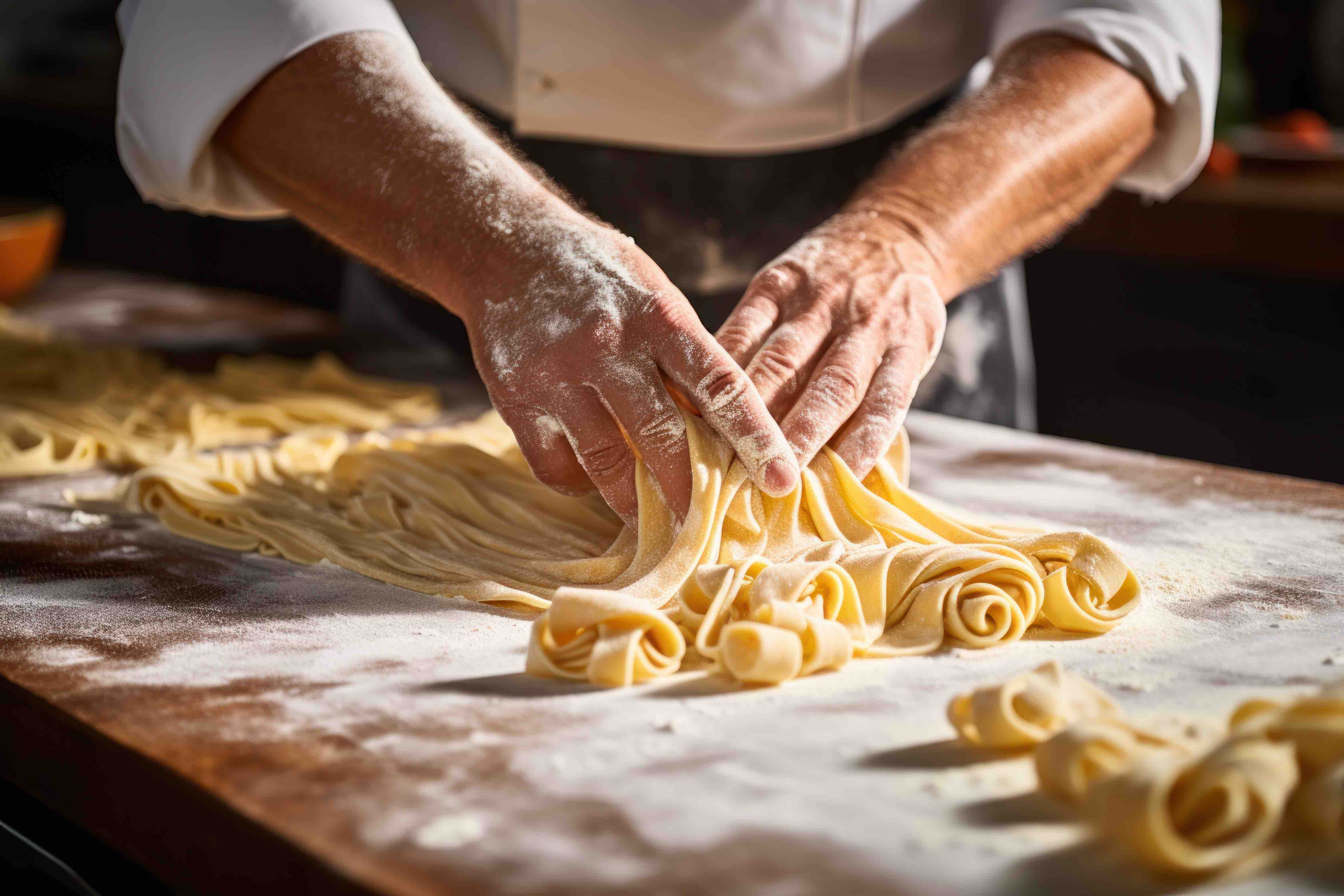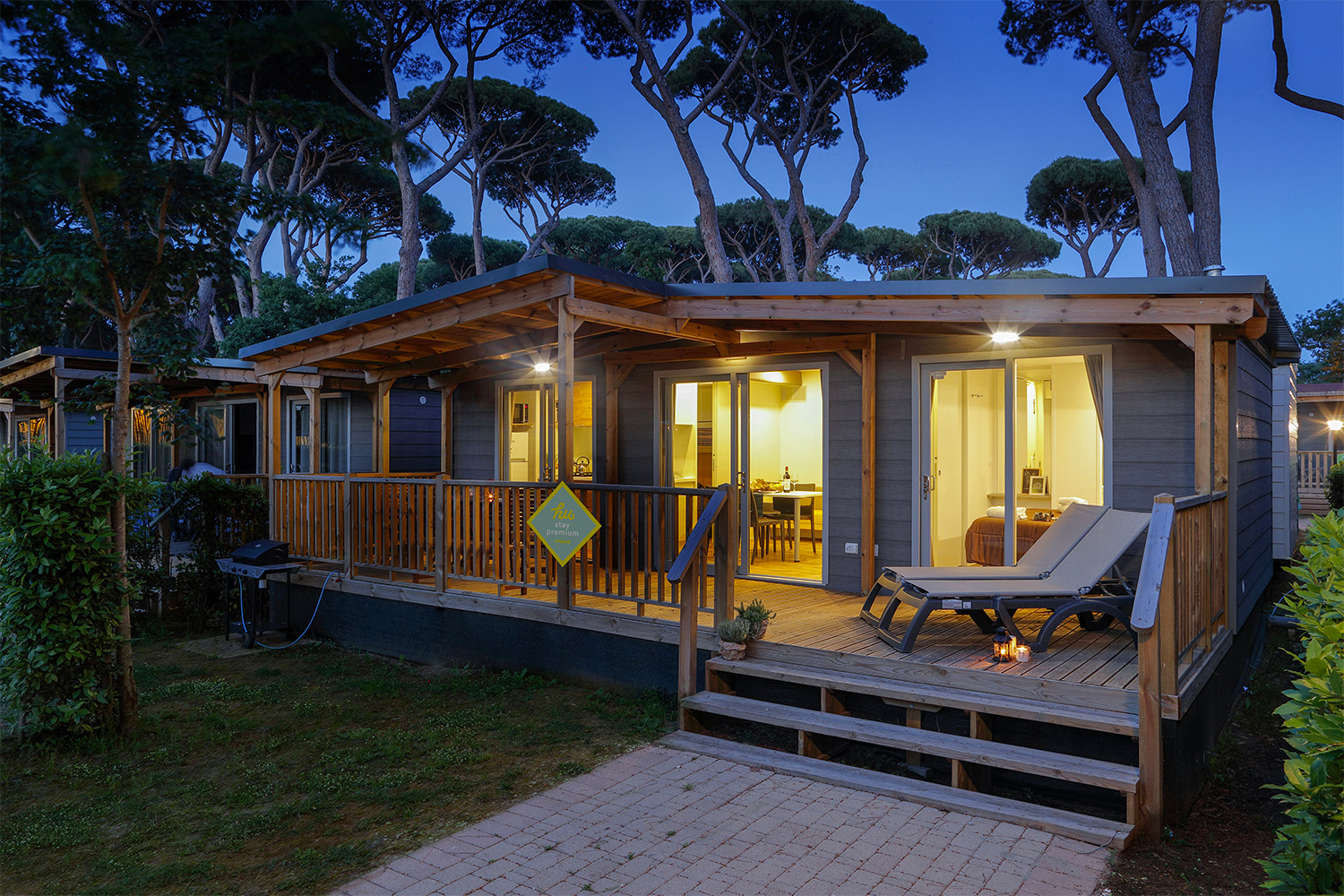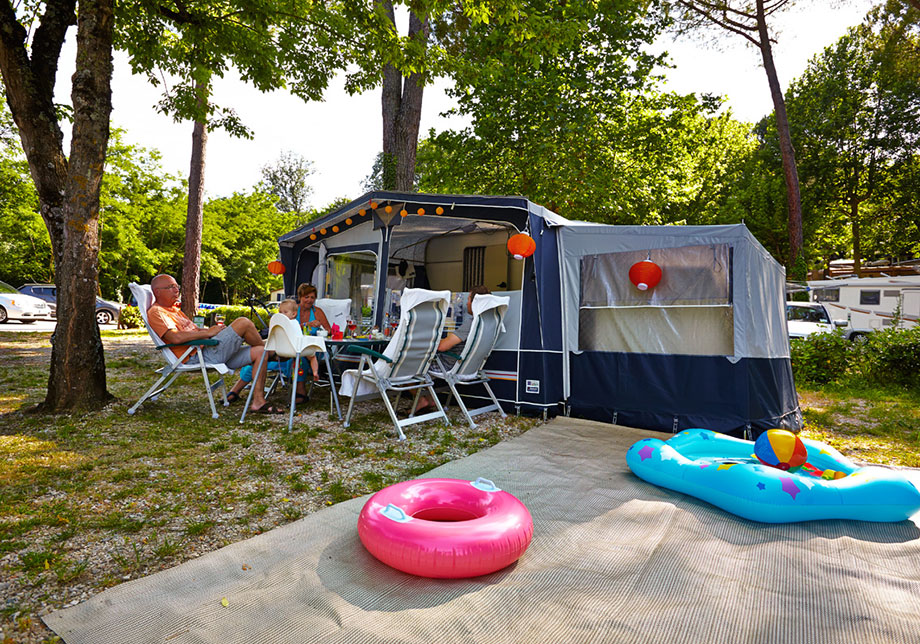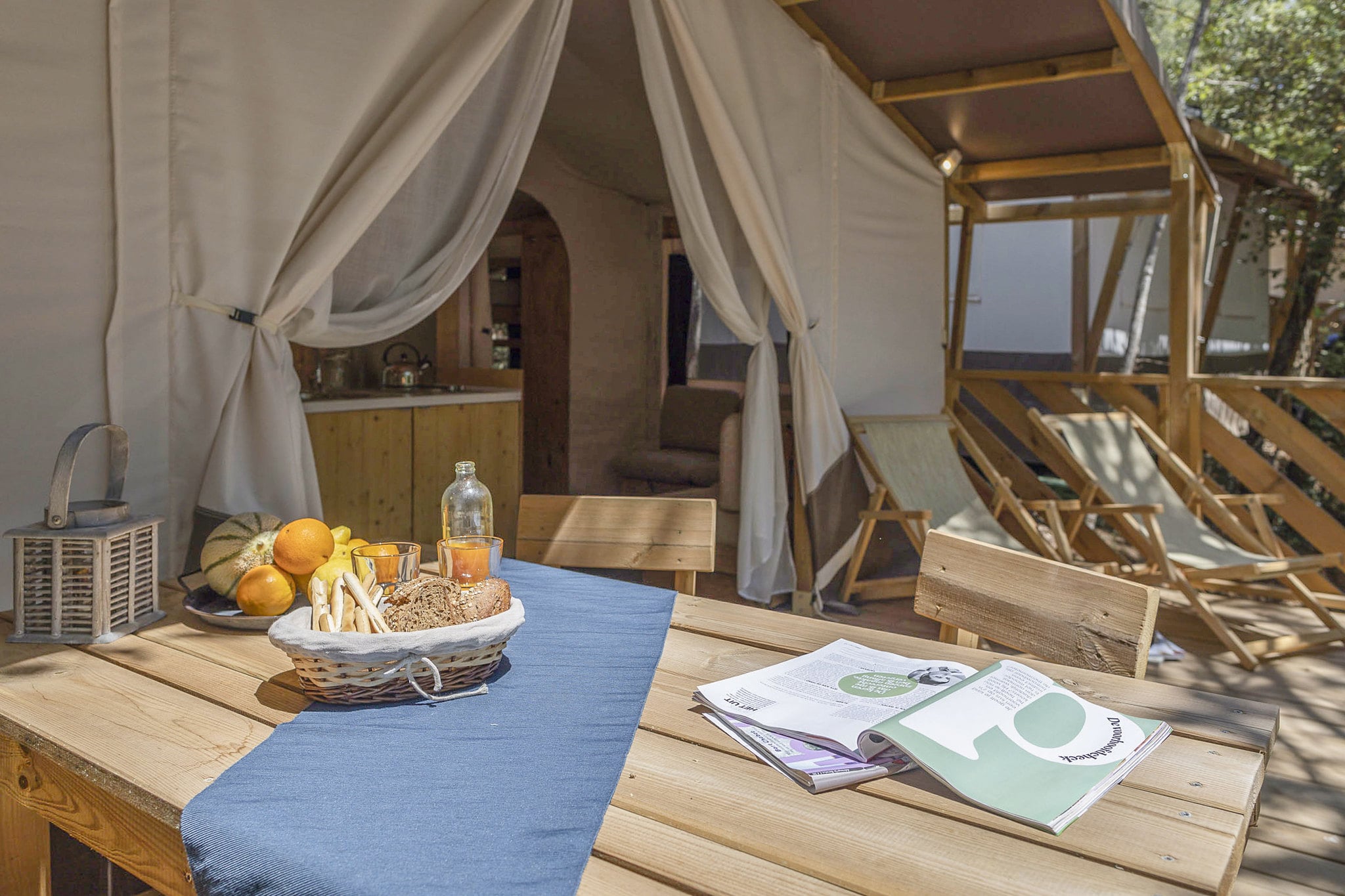The crown jewel of Tuscany, the city of 100 churches is certainly worth a visit. It's a place where visitors can savour that typically Italian atmosphere of an urban fairground enclosed within the city walls.Intimate, authentic, and welcoming, Lucca is the ideal destination to taste a slice of Tuscan history, visit a few monuments, and dine in rigorous Tuscan style.
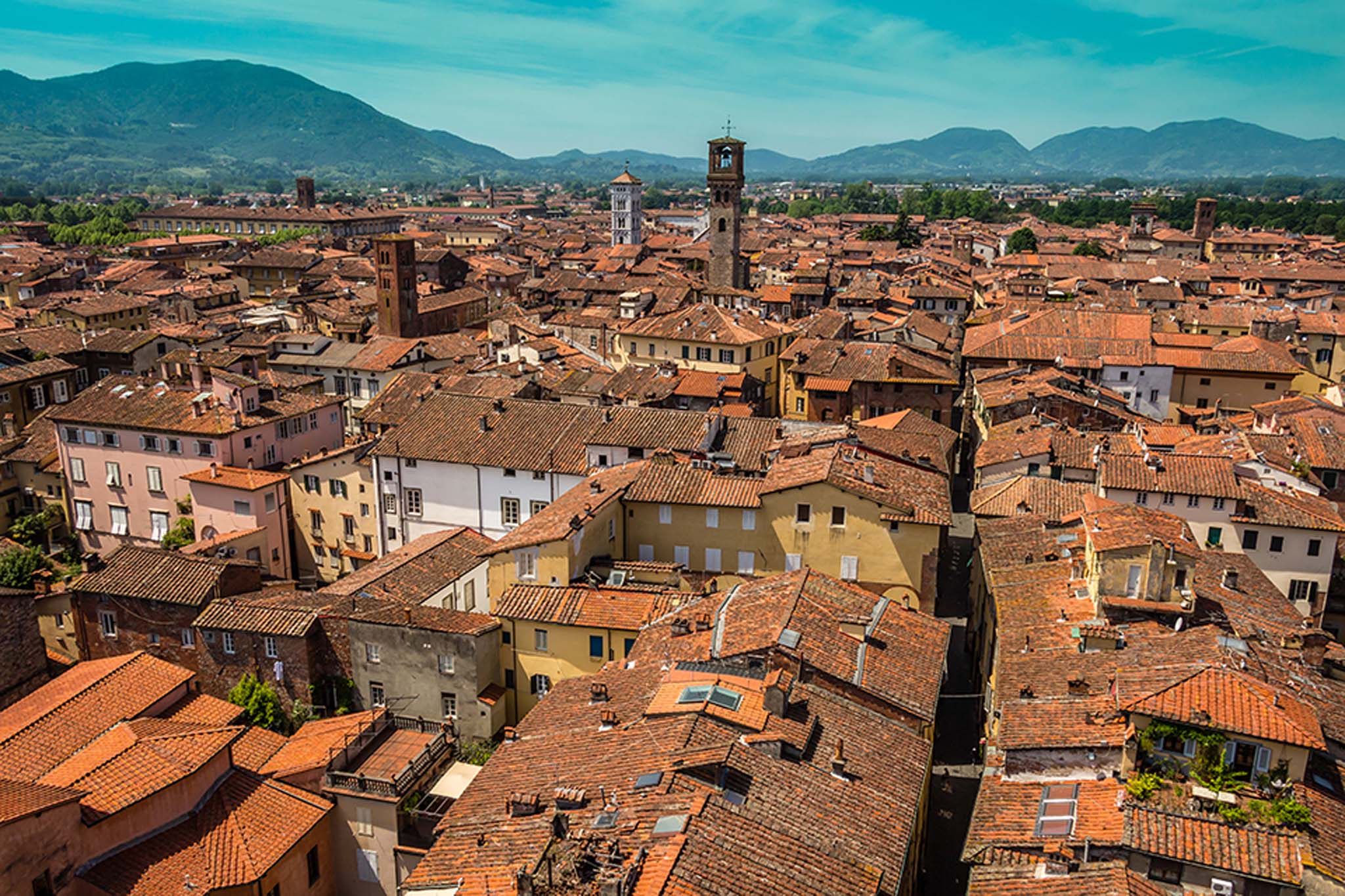
The Walls of Lucca
Where to start? On the walls, of course!
Lucca's city walls date back to the Renaissance period and boast the record of being the only city walls which are viable for a circuit of 4 km, measuring 12 metres high. Overlooking the city's red roofs, the setting is ideal for a panoramic walk or bicycle ride among the greenery, picnic spots, and recreational areas.
The walls in Lucca have never suffered under true sieges of war, which is why they are still intact. In 1812, the walls were an essential safeguard when the city was in danger of flooding from the Serchio River, the second largest river in Tuscany.
Today, the walls are one of the favourite destinations for the inhabitants of Lucca themselves, whether it's for a jog in the morning, taking a break from work or meeting up with friends in the evening along the elevated green avenues.
The 100 Churches of Lucca
Not even its inhabitants know how many churches there are in Lucca. Each square and stately building boasts at least one place of worship or chapel, bearing witness to the prosperity that the city enjoyed during the Middle Ages. This is why it's also called the city of 100 churches, a characteristic that is shared with many other Italian cities.
In any case, whether they're 100 or 1000, it's impossible to visit them all, but a few are certainly worth your while.
The Lucca Cathedral
We must mention the Cathedral, the house of God and the city's main church.
From the moment you set eyes upon the building, the architecture will take your breath away, featuring a Romanesque-decorated façade, an asymmetric portico, and polychromatic marble strips.
But let's start at the beginning.
The historic basilica dates back to the 6th century, founded by San Frediano, a hermit who was subsequently elected bishop by the people. Over the centuries, the church underwent various transformations, but the wonderful façade was always maintained and preserved. It's difficult not to lose yourself among the many loggias, inlays and columns that adorn it, but don't miss the statue of San Martino. The church is dedicated to this saint who can be seen on the right side, sharing his cloak with a poor man.
Do you see anything strange? It's immediately evident that the right arch is disproportionate in comparison to the other two, a truly unusual feature for a Christian building. Symmetry and perfection have always been considered the only means to glorify God, while asymmetry was the analogy of the demonic universe. Among the various hypotheses and legends that have grown up around this arch, the most probable is that which takes into account the pre-existing bell tower that was under construction.
And finally, the labyrinth! A mysterious and allegorical symbol, the labyrinth of the Cathedral of Lucca is engraved right next to the entrance, accompanied by a phrase in Latin that recounts the myth of Arianna and Theseus, as if to depict the meanders of human life.
Piazza dell’Anfiteatro
When visitors arrive in Piazza dell'Anfiteatro, they have the impression of being caught in a protective embrace. This makes it one of the most beautiful squares in Tuscany, built in the nineteenth century on the ancient remains of a Roman amphitheatre, which explains its particular configuration.
To fully enjoy its harmony, locate the only 4 small doors located along the perimeter and look for the intersection point: the cross engraved on the tile in the centre of the square will help you!
It's also an ideal place to enjoy an aperitif or a refreshment during your visit to the city...
The Towers of Lucca
In days gone by, the towers of Lucca may have equalled the number of churches, since they were synonymous with power and wealth. Today there are only two, unrivalled observation points for a panoramic view from above to discover all the hiding places, lanes, and secret passages within the medieval city.
The first is the Guinigi Tower, which bears the name of the rich merchant family who owned it. Measuring 45 metres high, it features 230 steps and an unusual roof garden with 7 beautiful holm oaks.
But the Torre delle Ore is even higher, featuring 207 wooden steps. From the top, visitors can admire the eighteenth-century mechanism of the manually wound clock, still in working order.
Things to do in Lucca
Lucca is not only ideal for admiring churches, towers, and squares. It's a very active city, a destination for many Tuscans and visitors from further afield, and a reference point for events and concerts.
Lucca Summer Festival
Now in its 25th edition, every year the musical event is held in the city squares during July. Some of the big names who have tread the Lucca Summer Festival stage include David Bowie, Bob Dylan, Anastacia, Elton John, and the Rolling Stones.
Lucca Comics & Games
Since 1993, Lucca has also hosted the annual fair dedicated to comics, video games and board games: the most important event of its kind in Italy and second largest in the world, after Tokyo.
In 2016, 500,000 visitors, of all ages and from all over the world came to enjoy industry events, screenings, meetings with authors and cosplayer tournaments.


